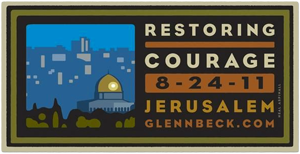17 March 2011
Just a late-night tip of our cap to honor some of our ancestors. ~CAJ
From The American Spectator, The Solitude of St. Patrick
I rise today
with the strength of the sky,
with the light of the sun,
with the splendor of the moon,
with the brilliance of fire,
with the blaze of lightening,
with the swiftness of wind,
with the depth of the ocean,
with the firmness of earth,
with the firmness of rock.
— From the Breastplate or Lorica of St. Patrick
(probably written a century after his death)
This St. Patrick’s Day set aside, for a moment, the shamrocks, snakes, green beer, Touchdown Jesus, and river dancing. Engage, if you will, the authentic, towering figure of what was once Irish Christian culture: St. Patrick, a noble son of Roman Britain, possibly an atheist from his youngest days, and a grievous sinner as related in his public confession. He was a captured slave who found God in the solitude of a foreign, barbaric land without family, friends or social intercourse for six years.
Patrick finally escaped captivity, walking 185 miles across Ireland to find a way back across the water. Eventually, he returned to convert the Irish barbarians to Christianity.
Patrick lived in County Antrim near Belfast or, as recent scholarship indicates, in County Mayo near the border with County Sligo. He endured the isolation, that sense of abandonment that many human beings have encountered whether it be in physical captivity or the captivity of their minds — alone, depressed and cut off from divine and human communion….
…Patrick himself described this time of isolation, yet spiritual development, in deeply moving terms:
God used the time to shape and mold me into something better. He made me into what I am now — someone very different from what I once was, someone who can care about others and work to help them. Before I was a slave, I didn’t even care about myself.
The last sentence in the quote above underscores the transformative nature of this existential experience for Patrick. As a child of a privileged family, complete with a villa and possibly slaves of his own, he had felt nothing for himself, for other human beings or for God — until he was reduced to the lowliest estate of an Irish slave, cast adrift on the far shores of civilization, with only his inner spiritual resources offering him the means of transcending his loneliness, fear, and humble circumstances…
Read the entire article at The American Spectator.
To you, our readers and friends~
May you have…
Walls for the wind,
A roof for the rain
And drinks beside the fire.
Laughter to cheer you,
Those you love near you
And all that your heart may desire.
“Beannachtaí na Féile Páraic oraibh!” St. Patrick’s Day blessing upon you!







